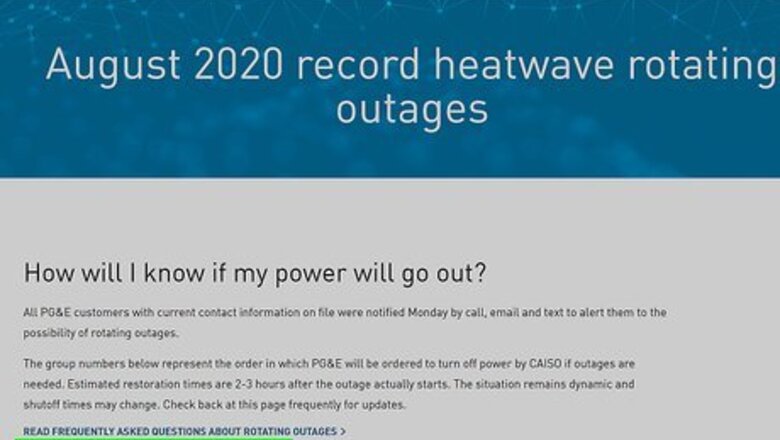
views
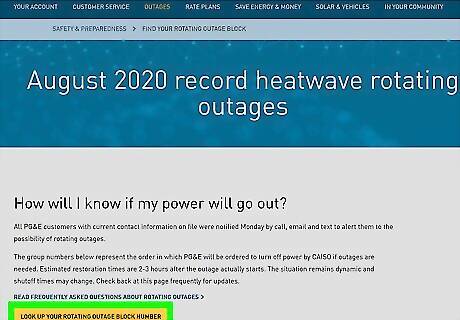
Open the outage look-up from the PG&E outage page. Go to the PG&E outage site and look for a yellow button that says “Look up your rotating outage block number”. When you click on the button, it will open the look-up page in a new tab on your browser. You will see a map of the Bay Area on the right and a search bar on the left. Leave the original PG&E tab open since you’ll need to go back to it later. You can access the main PG&E outage page here: https://www.pge.com/en_US/residential/outages/planning-and-preparedness/safety-and-preparedness/find-your-rotating-outage-block/find-your-rotating-outage-block.page?WT.mc_id=Vanity_rotatingoutages. You cannot open the look-up page in Internet Explorer.
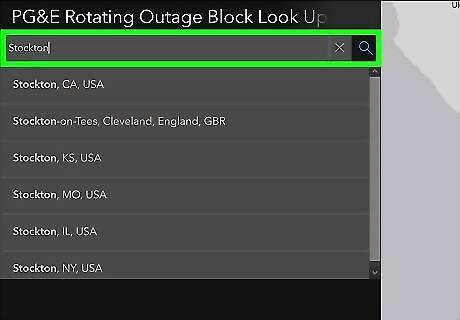
Type in an address to find a building’s specific block number. Locate the search bar on the top left side of the window and click inside of it. Type in your full street address including the city, state, and ZIP code. Click on the magnifying glass icon or hit Enter to bring up the location on the map and display the outage block information. Recommended addresses will pop up as you’re typing. If you see your address on the list, then click on it so you don’t have to type the rest.
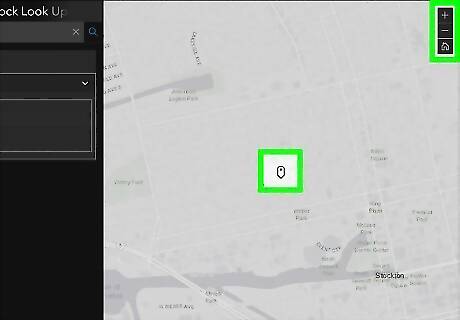
Click on the map to find the block number for an area. Scroll or use the “+” and “-” icons at the top of the screen to zoom on the area you want to find the outage block number for. When you find the area, click anywhere on the map to find the information for that spot. A ZIP code or full address will appear in the search bar once you select an area on the map. The outage block information will appear below the search bar.
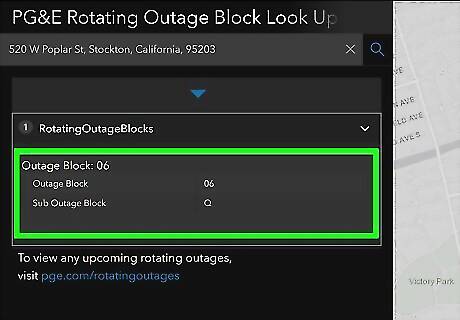
Combine your outage and sub outage block to get the block number. Look in the box underneath the search bar to find the outage block and the sub outage block. The outage block is a number while the sub outage block is a letter. The number and letter together will form your complete outage block number. For example, if the outage block says “3” and the sub outage block says “G”, then your block number is 3G. If the outage block says “50,” it will not have an sub outage block. If you see “No features found that meet the search criteria” instead of an outage block number, then you won’t be affected by the rolling blackouts.
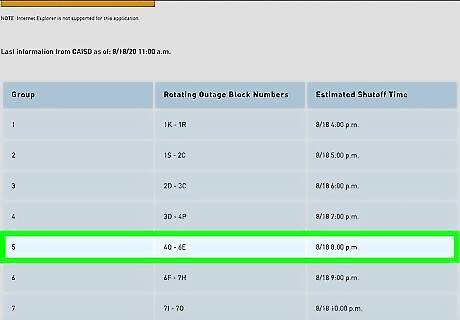
Find your block’s scheduled shutoff time on the PG&E outage table. Go back to the first tab with the PG&E site and scroll down to the shutoff time table. Find the range in the center column that your block number fits into. If a range says something like “2D–3C,” then the range contains anything from 2D–2Z and 3A–3C. Check the corresponding time in the third column to find out when you’re expected to lose power in PST. For example, if you’re in the range 1K–1R, then you can expect to lose power on August 18th at 4 PM PST.
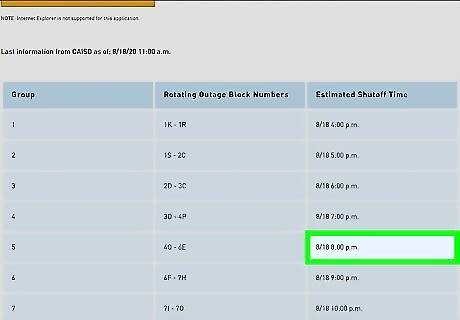
Expect power to be out for around 1–2 hours at the estimated time. If you do end up losing power, don’t panic. Look for something to do that doesn’t require power like reading a book or playing a board game. Try to keep your fridge and freezer closed so it stays cold throughout the outage. After about 1–2 hours, your power should come back on. If your power doesn't come back, then there may be another issue. Contact PG&E to find out if there are any other problems in your area.











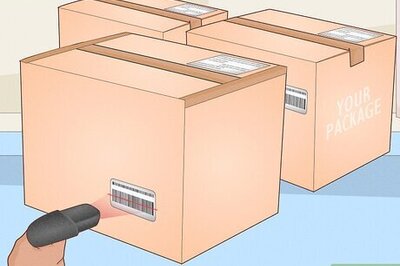








Comments
0 comment